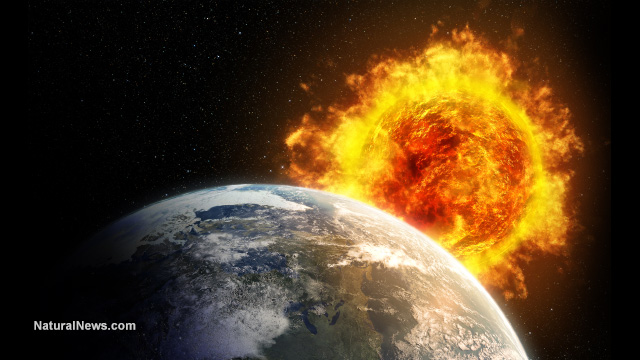
Fluctuations in the sun's activity may hold clues to the tangible changes in the planet Earth's climate, Swiss scientists found. Research funded by the Swiss National Science Foundation indicated that human-induced global warming may show a slight decline over the next few decades as the Sun's current activity is expected to eventually dwindle. This decrease in solar activity may result in a minute decline in the planet Earth's temperature, the researchers added.
A team of researchers from the Physical Meteorological Observatory Davos (PMOD), the Swiss Federal Institute of Aquatic Science and Technology, ETH Zurich, and the University of Bern have developed a calculation model to quantify certain effects that the Sun's activity will contribute to the planet's temperature change in the next century.
According to the researchers, the calculation model indicated that following a high solar activity in the 1950s, the planet's temperature is expected to drop by up to 0.5 decrees Celsius once the Sun's activities dwindle to a minimum.
PMOD director and project lead Werner Schmutz said such temperature decrease would be significant, but will otherwise do little to taper off the human-induced global warming.“We could win valuable time if solar activity declines and slows the pace of global warming a little. This will be no more than borrowed time since the next minimum will inevitably be followed by a maximum,” said Schmutz.
Experts connect solar fluctuations, planet's climate
A team of experts took a closer look on the effects of solar activity on the planet's past climate. In order to come up with an efficient climate effect model, PMOD researchers have calculated the Sun's radiative forcing, accounting electromagnetic and particle radiation in the process. Researchers at ETH Zurich then studied the effects of radioactive forcing on the planet's atmosphere. On the other hand, researchers at the University of Bern examined the interaction between the atmosphere and the ocean.
The research team then inferred a greater radiation fluctuation striking the planet. Their assumption was more intense compared with previous models. According to Schmutz, examining other effects such as a volcanic eruptions prove to be less conclusive and that using the current model "is the only way that we can understand the natural fluctuations in our climate over the last few millennia."
The Sun's activity over the following years remains to be observed. However, Schmutz pointed out that useful data have only been made available in the past few decades, and that the said studies do not indicate a current fluctuation in solar activity. "To that extent, our latest results are still a hypothesis. But since we have been observing a consistently strong phase since 1950, it is highly likely that we will experience another low point in 50 to 100 years' time. It could be every bit as intense as the Maunder Minimum, which brought particularly cold weather during the 17th century," said Schmutz.
Previous study finds link between Earth's climate, solar activity
In 2011, a team of more than 100 experts in solar physics, geomagnetism, climate modelling or atmospheric chemistry collaborated to determine the effects of solar activity on the planet's climate. The team assessed current climate models and identified certain mechanisms where variations in solar activity affected climate variability per region. the researchers did not identify certain solar activities that may trigger global warming.
However, the team was able to determine how solar activities impact certain regions in the planet. For example, the study revealed that variations in ultraviolet radiation may spur changes in the stratosphere near the equator and across the polar regions.
Research data also showed that solar winds impact the planet's global electric field, which in turn affects aerosol formation and subsequent rainfall.
Sources include:
Please contact us for more information.




















